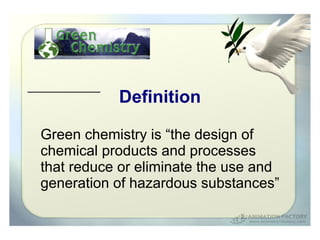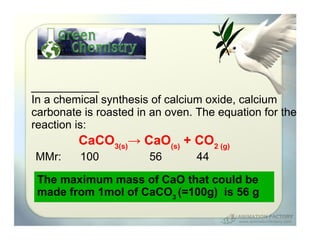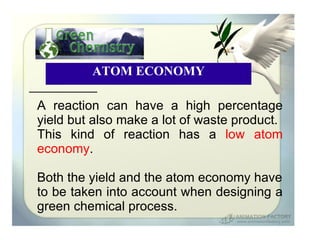This document discusses the concept of atom economy, which is a measure of efficiency in chemical reactions. It is defined as the ratio of the total weight of atoms in the products to the total weight of atoms in the reactants. A higher atom economy means more of the reactants are incorporated into the desired products and less is wasted. The document provides an example reaction and calculations to show how atom economy is determined. It explains that both yield and atom economy should be considered when designing green chemical processes in order to minimize waste.














